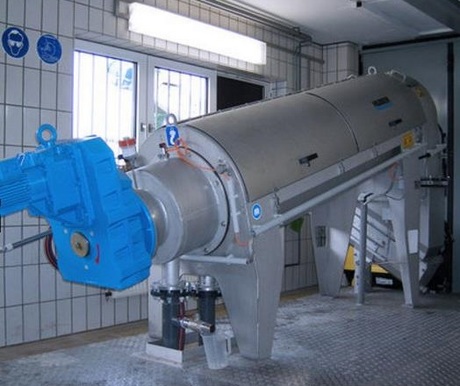What does the future hold for municipal biosolids dewatering in Australia?

Every year in Australia, over 85 million tonnes of biosolids (sludge) are dewatered at municipal sewage treatment plants (STPs) into around 1.65 million tonnes of dewatered biosolids, which is trucked off-site for mainly re-use in agriculture and composting. Biosolids dewatering takes place in most of the 2400 STPs in Australia.
Dewatering takes place via a variety of methods, with centrifuges being most commonly used at 39%, followed up closely by belt filter presses and drying beds at 24% and 23% respectively. Regionally there have always been trends in dewatering technology, with centrifuges favoured by most large NSW utilities and belt filter presses being favoured in Queensland and Victoria, along with rural NSW.
There is, however, a new trend emerging that has become the primary choice of major utilities in Brisbane and Western Australia — dewatering via screw press.
This is an interesting development as, like most of the dewatering technology used, screw presses are not new and in fact may well be one of the oldest technologies. Indeed, while the first centrifuges were used to separate dairy products around 1860 and belt filter presses were originally used in Europe in the early 1900s for pulp and paper, screw presses were first used in Roman times for pressing wine.
This new trend is being driven by changes in our economy and concerns over the environment and sustainability, as well as a need for municipalities to continually improve their efficiency and operating costs.
Large increases in operational and maintenance labour and power costs, as well as the unsustainability of processes that use large quantities of wash water, have certainly forced municipalities to look seriously at their current dewatering technology and search for better alternatives. Add odour generation, either around the dewatering process or in the dewatered biomass, noise and other environmental concerns, and the reason for the trend away from belt filter presses and centrifuges to screw presses becomes patently obvious.
Add to this the major advances in screw press technology in the last 10 years, enabling screw presses to now successfully dewater waste activated sludge (WAS), and the trend becomes one that is certainly here to stay.
In fact, it is safe to say that we can expect that most medium to large municipal dewatering facilities will make the change to screw press-based dewatering in the near future.
A first line of defence in wastewater screening
Two Queensland councils have opted for Australian-manufactured screening technology to protect...
Beef processor selects wastewater pump solution for dual purpose
John Dee Warwick wanted to upgrade its wastewater pump system to handle the day-to-day flows...
Melbourne Water finds an energy-saving solution
Sewage and wastewater treatment is a highly energy-intensive process, presenting a challenge for...










